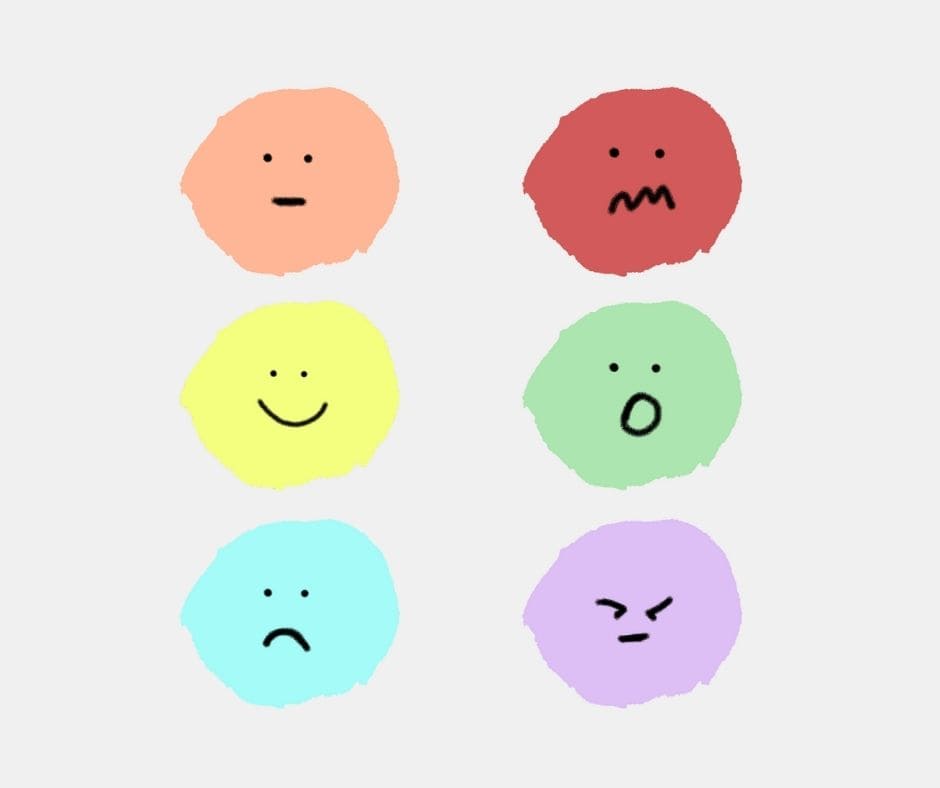How do you teach your kids to recognize what they’re feeling and name those emotions in a healthy and positive way? We have a few fun activities here for you to try!
Besides being an excellent film, the movie Inside Out took a big step forward in bringing to life the emotions and feelings each of us has. It transformed some of our most fundamental feelings – joy, sadness, fear, anger, and disgust – into characters with unique personalities. Instantly the characters become likable and most importantly, they become relatable to kids.

Teaching kids to talk about their emotions
Try this naming emotions activity
Here’s a free picture card activity to help get you started talking about emotions with your kids. Download the ‘What Are You Feeling?‘ chart below – it can be used for all ages. Don’t let the simplicity put you off.
Then try these three ways to adapt the chart to different age groups.
1. Feeling pictures for kids [print & display]
All kids feel big emotions, whether they’re little or teens. The goal is not to stop them from feeling big emotions, rather it’s to teach them to recognize and communicate what they’re feeling inside.
Print a few copies of the ‘What Are You Feeling?’ chart. Tape a copy on the fridge, on the bathroom mirror, in your child’s bedroom, or in any other visible places. Even keep a copy in their backpack or your bag. As often as you can, ask them to tell you what each of the faces means. Ask them to tell you which face (color) represents what they’re feeling inside. Ask follow-up questions and keep reinforcing that you know just what that feels like.
Tip: Keep encouraging your child that all emotions are normal, we all feel them, and that we don’t have to get rid of them. It’s okay to feel sad, it’s okay to feel angry.
2. Feeling jars
This is a fun way to use up old jars! Collect six jars and print a ‘What Are You Feeling?’ chart. Let your child cut each of the six colored blobs out. Stick them onto the sides of each of the jars. Use clear tape to protect them or craft glue that dries clear.
Now you decide what works best for you. Choose either some different colored tokens, beans, beads, pom-poms, or buttons and assign each to a different jar. When your child is happy, sad, frustrated, or even having a tantrum, once you’ve resolved the moment, take them to the jars and let them put one of your items into the jar that represents what they were feeling. It’s a great way of visually seeing how many different types of emotions we feel and how often we feel them.
Tip: For older kids, get them to write down their feelings throughout the day on a bit of paper. Then let them fold them up and put them into the jars.


